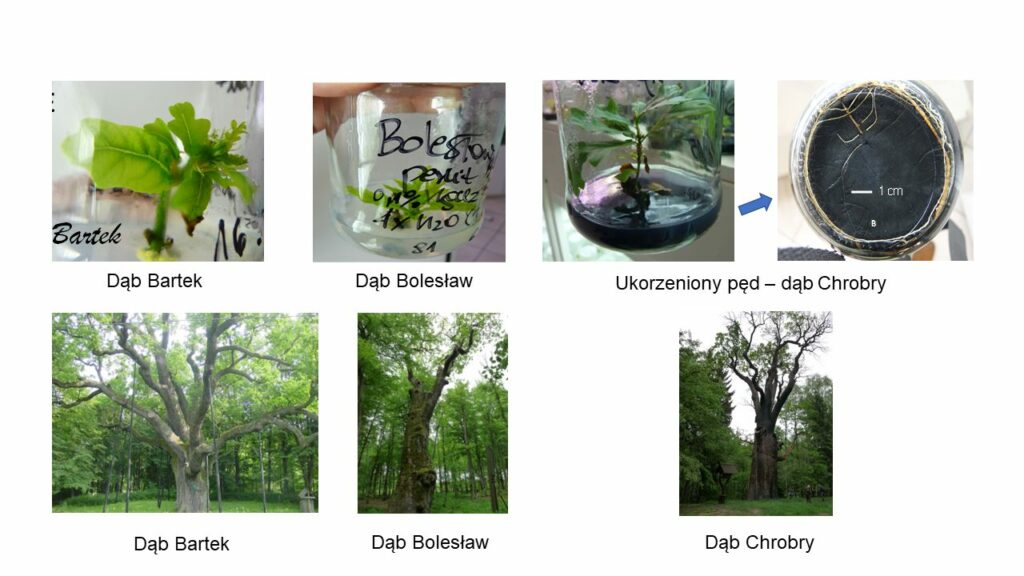
Dr Marcin Michalak from the Department of Plant Physiology, Genetics and Biotechnology at the University of Warmia and Mazury (UWM) in Olsztyn, together with colleagues from the Institute of Dendrology of the Polish Academy of Sciences, has developed an innovative in vitro cloning method for the oldest monumental oak trees.
So far scientists have known how to clone three-hundred-year-old pedunculate oaks, but for this species of tree such an age does not mean much at all.
The idea of cloning these trees has emerged so that their genotypes can be preserved for future generations. “There is an English saying that an oak tree grows 300 years, lives 300 years and dies 300 years. It is assumed that the upper limit is 900-1000 years, but many trees do not live to this age – for example, of the oak trees associated with the legend of Lech, Czech and Rus, only Rus remains”, explains Dr Marcin Michalak.
The in vitro method developed has allowed the cloning of twenty-one monumental oaks from Poland, including the approximately 800-year-old Bartek, Rus and Chrobry oaks. This means that the research has allowed the boundaries of oak cloning to be pushed back by half a century.









